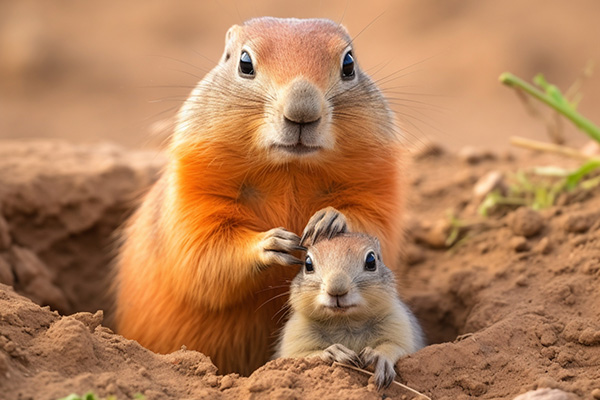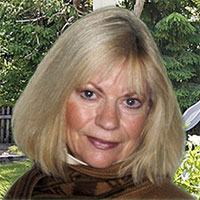Steering Through Life’s Trials with Belief
 The majority of us experience life akin to a thrilling roller coaster. We encounter moments of triumph and challenge, good days and difficult ones. Occasionally, we catch ourselves uttering words we ought to keep to ourselves or reaching for that chocolate chip cookie despite our vows to abstain.
The majority of us experience life akin to a thrilling roller coaster. We encounter moments of triumph and challenge, good days and difficult ones. Occasionally, we catch ourselves uttering words we ought to keep to ourselves or reaching for that chocolate chip cookie despite our vows to abstain.
Temptations abound in our lives. That nagging voice in our minds pushes us toward indulgence, even when our instincts caution against it. This can leave us feeling conflicted and uncertain about the best course of action.
Moreover, in addition to our personal highs and lows, there’s a myriad of happenings in the world surrounding us. Recently, it seems we are immersed in ongoing turmoil: conflicts, natural calamities, political rifts, financial strains, runaway technology, and immense unpredictability about the future. All of this contributes to the weight we already bear.
No wonder we feel overloaded or tempted to distract ourselves. When the world feels chaotic, it’s easy to stray from our path or forget the spiritual practices that keep us anchored.
That’s why remaining connected to faith, however you define it, is crucial now more than ever. It serves as an anchor amid turbulence, a solid hold when everything else feels fluid.
Faith encourages us to pause, communicate thoughtfully, and make wiser decisions. It offers us clarity and guidance. When we stray from it or dwell in negativity, life usually seems to become more arduous and intricate.
Personally, I’ve discovered that my best days typically begin with prayer and a moment of silence in meditation. That’s when I can truly listen and tune into what God may be saying to me. It sets a positive tone for my day and often steers me toward where I need to go. When I neglect this practice, I perceive the contrast. I lose clarity, revert to past behaviors, say things I wish I hadn’t, and even start desiring things I know aren’t beneficial for me.
Faith is the strength by which a shattered world shall emerge into the light ~ Helen Keller
<p.We all experience those kinds of days. However, one fundamental practice that keeps my faith vibrant is sharing it with others. This doesn’t entail preaching or trying to impose my beliefs on anyone. Sometimes, it’s merely about offering a smile, a kind word, or a small act of kindness when someone is in need.
I make an effort to remain receptive, to sense what others are experiencing, and connect with them on a deeper level. That’s my preferred way of sharing faith—by simply being present.
Faith has also assisted me in staying grounded and releasing many concerns that used to occupy my mind. In my younger years, I became entangled in matters that now seem trivial. With faith, I feel more clarity. It reminds me of what truly counts: love, patience, and peace.
When I’m walking in faith, it feels as if my prayers are more readily acknowledged and everything tends to flow more smoothly. But when I lose that connection, it feels as though I’m alone, which makes life feel burdensome. I’ve come to understand that I can’t navigate this life without some form of spiritual backing. For me, it’s akin to attempting to drive a car without a steering wheel – I often end up veering off course.
Recently, someone dear to me expressed something that resonated deeply: “Why do I feel so emotionally numb? When I’m surrounded by those who are in pain, I can’t connect with them. I just don’t feel anything.”
Faith is a state of being. Faith is putting hope and power into that which we cannot see now, but know we will see in the future ~ Kahlil Gibran
When I enquired if he ever engaged in prayer or had any spiritual routines, he responded no. He felt no belief in anything. I began praying for him, quietly and sincerely. Then, just last night, he sent me a message revealing that he had a dream. In this dream, an angel came to him and poured oil over him. He awoke with a desire to reconnect with his childhood faith, which was Catholicism for him.
Reading that message brought a smile to my face! Though I’m not Catholic, I do use the Rosary and appreciate it as a meditation tool. It was heartwarming to witness that shift in him, simply from being open. It illustrated the truth that when we seek with faith, we genuinely discover something significant.
Faith simplifies navigating life with love, grace, and purpose. It encourages us to be kinder, more patient, and more attuned to one another. And honestly, that’s something this world desperately needs right now.
No matter what your faith entails, I hope it helps you perceive clearly and maintain balance in this sometimes chaotic and perplexing world. Allow your light to shine, even if it’s just a tiny flicker. You never know who might be in need of it.
|
Moon Goddess is a third-generation empathic healer and seer. She began offering healing readings more than 20 years ago. From a young age, she has always shown interest in and studied various metaphysical topics. Being hypersensitive, she can sense and foresee events ahead of time. Utilizing the Tarot, along with her Guides’ assistance, she provides support to many people around the globe. After his passing, her grandfather fulfilled his promise and returned to bid farewell, granting her an extraordinary experience. Moon knows there is indeed a wonderful Heaven beyond this life! Sharing her story has aided many individuals grappling with loss or grieving in any form. Get a reading with Moon Goddess now at PsychicAccess.com. |
Life encompasses highs and lows, twists and turns, as well as unanticipated obstacles that may leave us feeling daunted and adrift. In challenging times, it’s easy to lose faith and assume there’s no escape. Yet, for numerous individuals, faith can serve as a beacon that assists them in maneuvering life’s hurdles with fortitude and perseverance.
Faith is an influence that can deliver solace, guidance, and support during trying times. Whether rooted in a higher entity, oneself, or the universe, possessing a robust belief system can help individuals remain anchored and focused during adversity.
One of the main ways in which faith aids people in dealing with life’s difficulties is by furnishing a sense of purpose and significance. When we trust in something larger than ourselves, we gain perspective and can appreciate the larger picture. This outlook can be invaluable when confronted with hardships, as it reminds us that our trials serve a purpose and that we are not alone on this journey.
Faith can also infuse individuals with hope and positivity. The belief that a higher power watches over us or that circumstances will ultimately improve can empower us to endure trials. This sense of optimism acts as a strong incentive, encouraging us to move forward even when the path ahead appears bleak and unclear.
Besides providing comfort and hope, faith equips individuals with resilience and coping strategies. By depending on their faith, individuals can harness their inner strength and resources to surmount challenges and rebound from setbacks. This fosters a resilience that will benefit them when future difficulties arise.
Of course, maneuvering through life’s trials with faith is not always straightforward. There will be moments when our faith is strained, we question our beliefs, or we contemplate surrender. Nonetheless, it is precisely during these periods that our faith can exert its most potent influence, offering us the strength and valor to persevere through tough times.
Ultimately, faith serves as a robust asset for tackling life’s complexities. By providing solace, hope, and resilience, faith enables individuals to weather life’s storms and emerge strengthened and more resilient. So, whether your belief lies with a higher power, yourself, or the universe, remember that faith can illuminate your path and guide you through life’s challenges with grace and fortitude. Continue reading
















